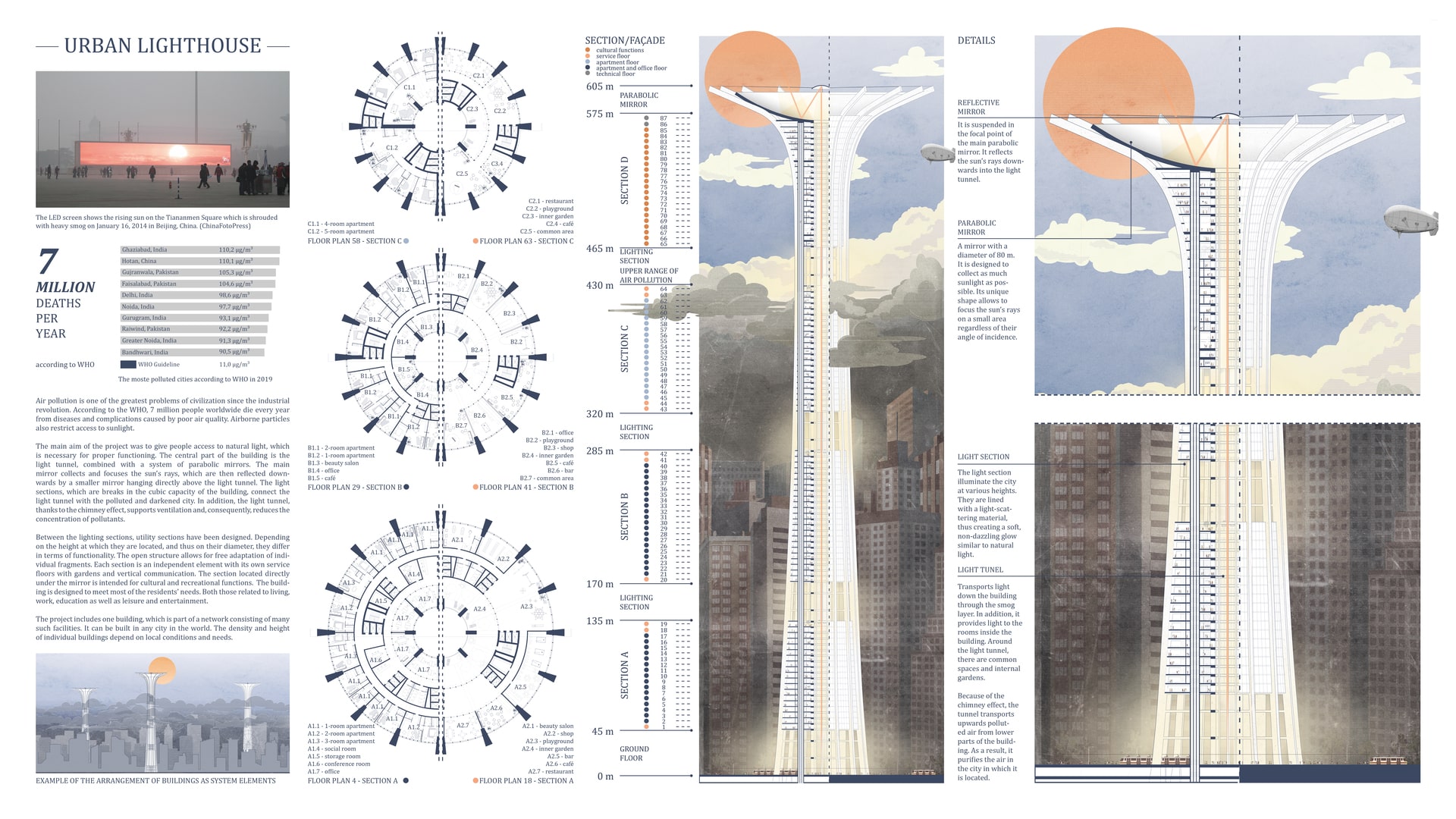Project Description
Air pollution is one of the greatest problems of civilization since the industrial revolution. According to the WHO, 7 million people worldwide die every year from diseases and complications caused by poor air quality. Airborne particles also restrict access to sunlight. The main aim of the project was to give people access to natural light, which is necessary for proper functioning. The central part of the building is the light tunnel, combined with a system of parabolic mirrors. The main mirror collects and focuses the sun’s rays, which are then reflected downwards by a smaller mirror hanging directly above the light tunnel. The light sections, which are breaks in the cubic capacity of the building, connect the light tunnel with the polluted and darkened city. In addition, the light tunnel, thanks to the chimney effect, supports ventilation and, consequently, reduces the concentration of pollutants. Between the lighting sections, utility sections have been designed. Depending on the height at which they are located, and thus on their diameter, they differ in terms of functionality. The open structure allows for free adaptation of individual fragments. Each section is an independent element with its own service floors with gardens and vertical communication. The section located directly under the mirror is intended for cultural and recreational functions. The building is designed to meet most of the residents’ needs. Both those related to living, work, education as well as leisure and entertainment. The project includes one building, which is part of a network consisting of many such facilities. It can be built in any city in the world. The density and height of individual buildings depend on local conditions and needs.
